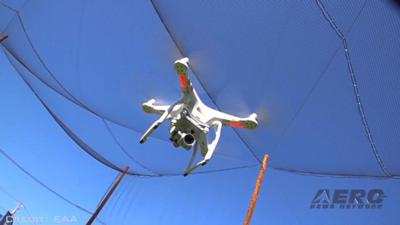Substantial Number Of Crewed A/C Operations... Seemingly Ignore, Including Ultralights, Backcountry Flying, Seaplanes, And Rotorcraft
EAA has submitted written comments following a recent public meeting on an Advisory and Rulemaking Committee (ARC) final report that provides recommendations to the FAA regarding the integration of beyond-visual-line-of-sight (BVLOS) operations by UAS into national airspace.

Current Part 107 rules only allow BVLOS operations if the operator applies for a waiver from the FAA; otherwise, all drone operations must be visual line of sight.
ARCs are industry-led groups that provide non-binding recommendations to the FAA on writing or revising regulations. The BVLOS ARC membership was heavily weighted toward commercial UAS interests, and its final report is controversial. Nearly all groups on the ARC representing crewed aircraft submitted statements of non-concurrence. EAA was not invited to participate on the ARC but closely monitored its progress and actively conferred with its members.
The BVLOS ARC final report proposes rules that would authorize all BVLOS operations at altitudes below 500 feet AGL if the uncrewed aircraft possesses remote ID. To accommodate these operations, the ARC suggests altering right-of-way rules such that any crewed aircraft that does not have ADS-B Out or traffic awareness beacon system (TABS) equipment installed must yield to the drone. This recommendation was made on the assumption that minimal crewed aircraft operations occur below 500 feet and that operators still have the option to maintain right-of-way if they install position-broadcasting equipment. It was also written into the report in spite of the unanimous objection of the general aviation industry members of the ARC.
“These recommendations set forth an aviation safety environment where crewed operators either equip with TABS or ADS-B or yield the right-of-way to drones,” EAA wrote in its comments. “Not only does this go against all aviation right-of-way rules, where the less-maneuverable aircraft has the right-of-way over others, it would hand the right-of-way from humans to automation in a life-or-death scenario, a situation that raises serious ethical concerns.”

EAA also noted that there are a substantial number of crewed aircraft operations that occur at low altitudes which the recommendations seemingly ignore, including ultralights, backcountry flying, seaplanes, and rotorcraft. Additionally, EAA indicated that ADS-B and TABS are not feasible solutions to provide reliable collision avoidance and are impossible to install in many light-sport and ultralight aircraft, denying many aviators the ability to obtain right-of-way even if they are willing to install these units.
“ADS-B is a traffic management technology, not a reliable system for collision avoidance, and TABS has yet to even be fielded in a meaningful way,” said Sean Elliott, EAA vice president of advocacy and safety. “Even if they were viable options for all low-altitude operators — and they are not — the prospect of a drone literally having the right of way over human life is simply unconscionable. EAA absolutely supports the safe integration of UAS into the airspace, but general aviation will not foot the bill for these commercial interests from a safety, access, or cost standpoint.”
 Aero-News: Quote of the Day (12.09.25)
Aero-News: Quote of the Day (12.09.25) ANN's Daily Aero-Term (12.09.25): High Speed Taxiway
ANN's Daily Aero-Term (12.09.25): High Speed Taxiway ANN's Daily Aero-Linx (12.09.25)
ANN's Daily Aero-Linx (12.09.25) NTSB Final Report: Diamond Aircraft Ind Inc DA20C1 (A1); Robinson Helicopter R44
NTSB Final Report: Diamond Aircraft Ind Inc DA20C1 (A1); Robinson Helicopter R44 ANN FAQ: Q&A 101
ANN FAQ: Q&A 101




